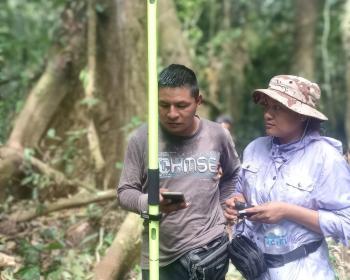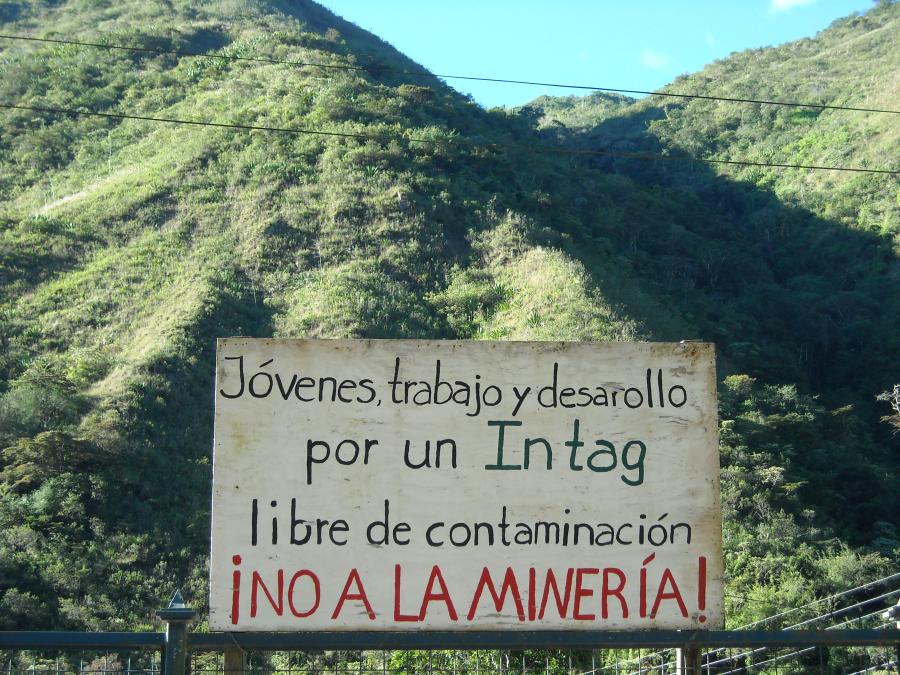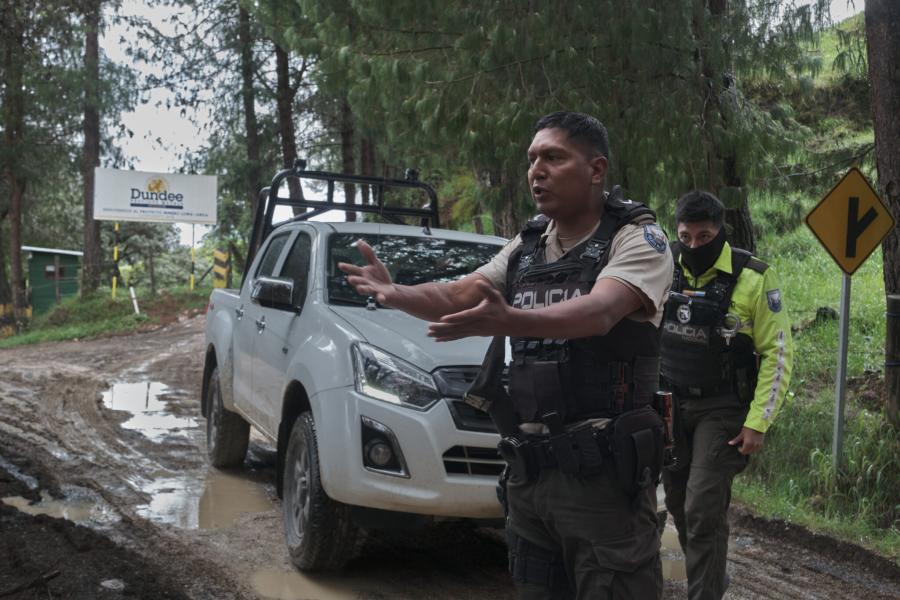Each morning Shuar Indian children in the southern Amazonian region of eastern Ecuador, gather in groups in their respective centros or villages from 8 a.m. to 1 p.m. to hear lessons broadcast over the radio, alternately, in Shuar and Spanish from the Shuar Federation headquarters in Sucua. They are engaged in an unusual program of bilingual and bicultural education devised, prepared and carried out by Shuar teachers and personnel, since 1972 in approximately 240 centres.
The program of bicultural radio schools was initiated by the Shuar Federation as an answer to the educational needs of Shuar children, which weren't being served by the school systems of the Ecuadorian government and the Salesian Missions. In addition, it is part of a larger effort by the Shuar to revive and strengthen cultural traditions before they are lost completely beneath the wave of acculturating influences resulting from colonization in the region of the national society.
The Shuar Federation, an impressive and effective Indian organization operative since 1964, was brought into being by colonists, ironically, largely through the efforts of the Salesian missionaries to help the Shuar defend their lands.
Though the Shuar staunchly resisted contact with Westerners since the mid-16th century, at the end of the last century they began to trade with the Salesian missions. Then their acceptance of the missionaries, in order to acquire trade goods previously unavailable in the Amazon, also entailed their acceptance of religious indoctrination, permanent villages, and education of their young in mission schools.
Schools were often far from villages and a large percentage of Shuar children boarded at the schools. According to Father Juan Bottasso, perhaps 80-90% of the entire population spent some time there. In return for education, children worked in the missions cleaning and tending the garden plots and livestock. The mission's control of large amounts of land and exploitation of Indian labor was not unlike haciendas throughout the region. In turn, labor was lost to parents and home villages.
The missionaries considered Christian education and the separation of children from their families necessary to eradicate barbaric practices and customs of the Shuar. For Shuar youths, the educational experience was alienating; it undermined their cultural identity and deprived them of a unique Shuar education in their home villages. Many Shuar children ended up choosing spouses in the missions, contrary to traditional Shuar matrimonial arrangements, and many preferred, once their schooling was finished, to continue living close by the missions, rather than returning to their home communities.
Since the end of the 19th century, colonists had been settling in the region, but during the past 25 years, due to government encouragement, the flow of landless Andean peasants increased dramatically. When pressures on Shuar lands became too great the Salesians, partly in self-interest and partly due to a raised consciousness, began to help the Shuar defend their lands. Today missionaries act only in an advisory capacity; the Federation and radio schools are now exclusively in Shuar hands.
In 1972, when the bicultural radio school program was created there were 10 boarding schools with 1,450 students; other Shuar attended public schools. Fewer than half of 5,000 potential students complete a primary education. It was difficult for Shuar children to travel long distances to get to school, especially in the rainy season, and many could not afford boarding expenses. The drop-out rate in public schools was always high due to the culture shock and alienation Shuar children experience with mestizo or white children and schoolteachers who don't speak Shuar. Those who stayed, often had to repeat years. Finally, in the thirty government schools, the majority of the government-appointed teachers did not wish to be there, did not speak Shuar, and had little enthusiasm for teaching children.
The success of the radio schools is evident in the high rate of attendance by Shuar boys and girls. The number of schools has grown from 30 to 177. Starting in 1979-80 the middle school curriculum was introduced into 30 centros.
In the primary school classes in each centro students listen to the broadcast lessons and follow the assignments in their textbooks. The materials used in classes are published by Mundo Shuar (the publications division of the Shuar Federation) and include books on hunting, agricultural techniques, Shuar myths, ethnohistory, etc. The students are helped with their lessons and studies by assistants who act as intermediaries between the radio programs and students, writing what is necessary on a blackboard to aid in comprehension. Between lessons there are 15-minute periods of recess which Shuar children spend playing or doing their homework.
The lessons are prepared on tape by Shuar teachers who have completed a secondary school education. They avoid the ethnocentrism and inappropriateness of textbooks prepared by whites for use in national schools. Classroom assistants do not have the same educational requirements as the teachers, but they must attend one of the training courses offered every summer in the Federation headquarters in Sucua, and they must be from the community in which they work. There are currently 371 teleauxiliares employed in the ciclo basico, most of them paid by the Ecuadoran government, and 41 of them supported by a Cultural Survival grant. There are also 40 assistants from the communities teaching practical skills, such as crafts-making, animal husbandry and sewing. Cultural Survival funds also help support these assistants, as well as some of the teachers and supervisors.
Elementary school programs are broadcast in the mornings on weekdays. On Monday, Tuesday and Wednesday afternoons there are adult literacy classes. There are currently 271 adult students with 48 assistants in the 41 centres where the classes are given.
The Shuar system of schooling has a number of advantages over the national-or mission schools. According to Father Shutka it is inexpensive relative to public schools in the rest of the country; a Shuar child attending the radio school costs the Ecuadorian government half the expense of his counterpart attending public schools in the rest of the country. It unifies the centros in a spirit of cooperation. It instills in Shuar youth a pride in their culture instead of degrading, negating or replacing it with a foreign one. School hours can be adjusted to the activities of the Shuar household so that there is as little separation as possible of children from their parents; children can still help their parents and learn from them. Thus though they are exposed to and introduced to the white man's world through their education, it is on other terms and is not a wrenching and traumatic experience which alienates them from their cultural background, community and family. In fact Shuar education prepares children to be leaders and participating members of their communities.
Article copyright Cultural Survival, Inc.



